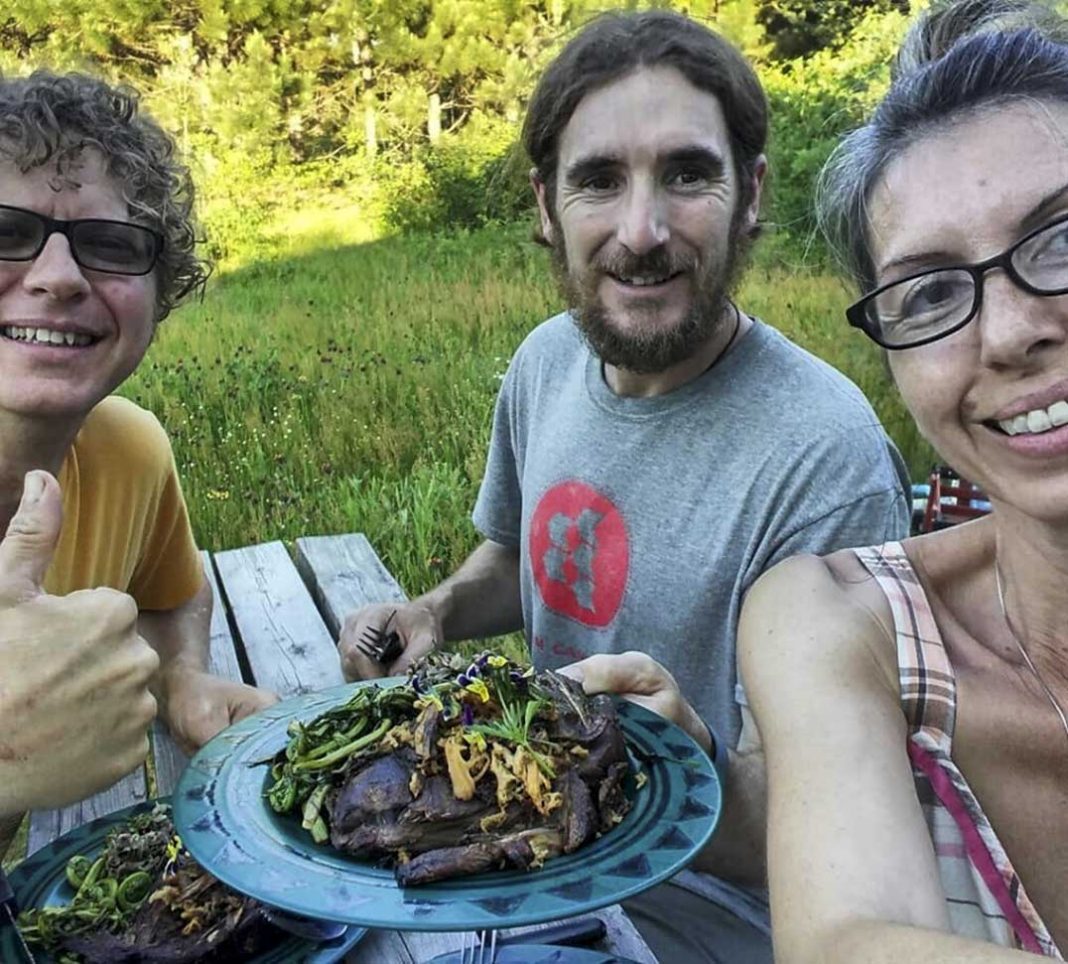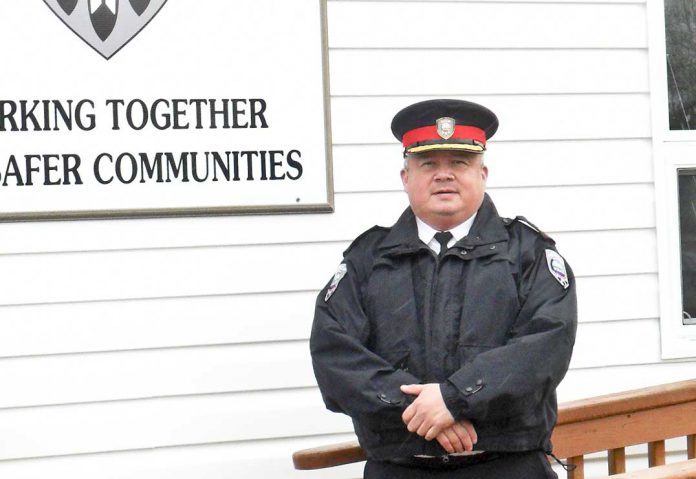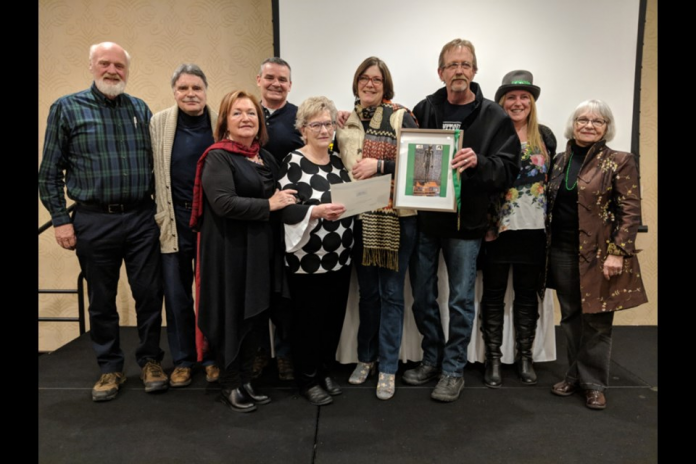Freezer stockpile growing quickly
EDITOR’S NOTE: The Expositor will be checking in regularly with this couple who have ties to Manitoulin Island as they embark on their Big Wild Year challenge. This is the sixth update since they began.
NORTH BAY – Things continue to look up for the Big Wild Year, a 365-day wild food challenge that will have just ticked past the 50 percent completion mark by the time this newspaper hits newsstands across the region.
“It feels like a really big milestone,” said Delphanie Colyer, who is undertaking the challenge alongside her partner Jeremy St. Onge.
For the entirety of 2019 during what they are calling their ‘Big Wild Year,’ the couple will only eat wild-foraged foods such as indigenous plants and animals they have hunted. Mr. St. Onge is an environmental studies professor at Canadore College and Ms. Colyer is a nurse with roots in Wiikwemkoong.
In last month’s update, Ms. Colyer had been recovering from an emotional low point which carried through into the first part of June. However, this month’s productive foraging helped to turn that trend around.
“We had really good luck with fishing after we sure didn’t during the winter months,” said Ms. Colyer.
On one fishing expedition alone, Mr. St. Onge managed to pull up more than 50 pounds of catfish with Ms. Colyer and a friend, putting a significant dent into his target of 800 pounds of fish for the year. That same night, a friend messaged him saying he had found a roadkill deer.
“It had just been knocked in the head because all the meat was good. That doesn’t usually happen; usually they have a broken back end and you lose a good amount of meat. It was in perfect shape, so that was awesome because we had none left in the freezer,” said Ms. Colyer.
They also managed to harvest 15 pounds of morels in one trip alone, leading Ms. Colyer to have to direct Mr. St. Onge to hold himself back from the addictive practice of morel picking to focus on other species they had yet to gather.
The two travelled to the Great Lakes Foragers Gathering in late June, where they served as the keynote speakers and met a great number of like-minded individuals—though, none quite as dedicated to the cause as their experiment.
“It was a great time; it was definitely worth the trip,” said Mr. St. Onge. “To be an event centred around all wild food was awesome. We’ve been to other gatherings where foraging might make up a portion, but there it was the whole event.”
There was a marketplace set up where processors of wild foods sold their wares, which enabled the couple to purchase hickory nut oil, wild black walnut and were gifted some hickory nuts and hickory milk from a fellow forager.
“It was super cool to have people sharing that passion for wild foods. It was nice seeing what we’re doing through other people’s eyes, too. When you’re doing it, you’re just doing it. It’s work; you don’t think about the scope so much because you’re just doing it to survive. Having other people remark on it was pretty awesome,” said Ms. Colyer.
They also had the chance to meet Mr. St. Onge’s favourite living wild food author Samuel Theyer (the couple are now on a ‘Sam’ basis with him). He led foraging walks in which he shared information about the plant species they encountered along the way.
A food contest took place for the best wild-made food and beverage. Hickory nut products took the prize, with an ice cream made of hickory nut milk, maple, vanilla and cinnamon earning the food title and a straight-up hickory nut milk won the beverage category. After the competition, the person who made the milk offered it to the couple as a gift.
“That was just so nice to have something gifted to us that we can actually have, because it was all wild food. It was awesome,” said Ms. Colyer.
Back home, their freezer is beginning to fill up for the long winter ahead. Ms. Colyer said she was elated to find that a previous strawberry patch she had found was still in existence, unlike some other properties that have been ripped up in past months. They were just about perfectly ripe and ready for the picking this past weekend.
The two describe the rest of their harvesting year as having three stages: fishing and berries, fishing and roots, then fishing and hunting.
“It breaks the time up so differently when you think of the chores that are coming your way. There’s not much time left to harvest,” said Ms. Colyer.
One item that has been a staple as of late has been rice cakes, a dessert item that’s “really filling,” according to Ms. Colyer.
“I’m trying to not eat as much of it because I think my weight’s been stable for a long time, but I gained a few pounds pretty quick with eating those cakes every day. I need to worry less about having half and give a little more to Jer,” she said.
On the subject, Mr. St. Onge’s weight has appeared to stabilize. He has been holding in the range of 156-158 pounds since the last update. They will be getting bloodwork and medical testing very shortly to assess their progress, information that will be shared in next month’s update.
“We’re still really curious about what exactly is in everything that we’re waiting. We’ve decided we might do a Kickstarter to raise money to take a bunch of food samples and get them tested,” said Ms. Colyer.
This was partially spurred by the last round of bloodwork which showed a slight uptick in mercury levels to just above the acceptable range, despite having a fairly constant diet in the two periods.
Nutrition testing is quite expensive but the two say it would be extremely useful from a scientific perspective in that it would provide nutritional information for these species that would be relevant for anybody wishing to incorporate more wild foods for years to come.
One slight drawback in June was the lack of a bear in the open season. However, Mr. St. Onge knows a hunter who may be able to gift them some of his bear fat that he was not planning on keeping, an important item that has become a staple in their cooking.
“We weren’t busy enough so we also planted a big garden for next year,” said Mr. St. Onge with a laugh. The two hope this will be a good way of getting their kids more involved in the process next year.
The two are off to a cultural festival in Nemaska, Que. this coming month and will also be heading to the Ontario Preppers’ Meet south of Owen Sound, where they will discuss their project to these different audiences.
To follow Ms. Colyer and Mr. St. Onge’s Big Wild Year, you can view their updates at Facebook.com/BigWildYear. The Expositor will be checking back with the two throughout the year to share their experiences in this unique endeavour.





